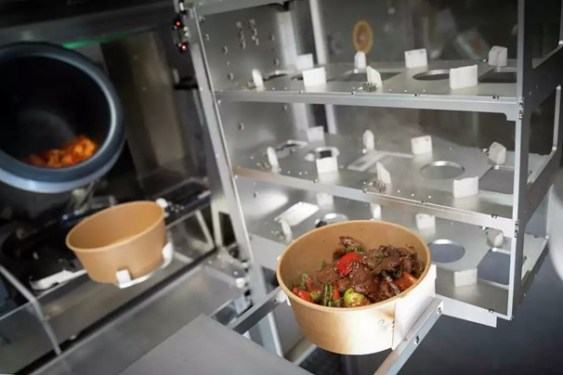When Shin Starr set out to build an autonomous kitchen, the company knew that the gimmick of robotic cooking would not carry the business. What would make Shin Starr’s OLHSO Korean BBQ food truck successful is its ability to cook and deliver a hot, fresh, tasty meal at a reasonable price. The co-founder and CEO, Kish Shin, stated that at the end of the day, customers do not care about the type of rocket science in the truck. They care about the value they are getting.
Han Sungil, a chef with over eighteen restaurants in Korea, came to the United States to lead Shin Starr’s culinary operations. This includes a brick-and-mortar restaurant in San Mateo, so expectations for the food are high. While the food has not been taste-tested by the writer, they plan to sample wagyu galbi and tteokbokki when the food truck arrives at TechCrunch Disrupt 2025, where Shin Starr is part of the Startup Battlefield 200.
Other companies, like DoorDash, are experimenting with autonomous delivery robots. Shin Starr is doing the reverse: a human drives the truck, but the vehicle is outfitted with the company’s Autowok. This is a modular, AI-powered robotics system that automates cooking, serving, and cleaning. Once the chef preps the ingredients, the Autowok handles the rest of the process.
While the truck is on the highway, the robotic system retrieves the prepared, fresh ingredients from a refrigerator and places them on a conveyor belt. The ingredients are then dropped into a tilted cylindrical canister. This canister climbs to high heats like a wok and rotates to cook the food. After the food is cooked and tipped into its packaging, the system cleans and sanitizes the canister, returning it to the cooking flow.
The system was designed to serve food and cook en route. For example, if a customer orders a wagyu beef dish and the truck is fifteen minutes away, the cooking process for the eight-minute wagyu will not start until the truck is seven minutes from the location. This ensures the customer receives food that is literally freshly cooked.
Other robotic kitchen startups have struggled to find product-market fit, but Shin Starr believes it can find its niche in airports. The company will soon open an OLHSO micro restaurant in a leading California airport. If that goes smoothly, other airports have expressed interest in implementing the technology.
Since the airport micro restaurant does not need to be staffed by humans, it can operate at any hour of the day. The chief marketing officer, Tord Olav Dønnum, pointed out that after 11 p.m., most restaurants close. However, ten percent of all people in the United States fly during the overnight hours from 11 p.m. to 7 a.m. This system will provide a fresh, high-quality restaurant meal instead of a snack from a vending machine or a dry sandwich.
Shin Starr hired Gower Smith as chief product officer. This is a wise decision, as Smith has extensive knowledge about high-tech automated retail. He is a serial entrepreneur in the space and most recently led Swyft, which partners with companies to create luxury vending machines in train stations and airports. This allows brands to set up shop without human labor or a large physical footprint.
Smith said the automated nature of the micro restaurant makes it easier to give customers a prediction of how long their order will take to cook. This is useful in settings like airports where people may be rushing to catch a flight. The micro restaurant needs periodic human intervention to restock the fridge and prepare ingredients, but otherwise, it should run smoothly on its own.
The company plans to start in airports and then expand into hotels, hospitals, and college campuses. These are environments where people are often hungry late at night and want a high-quality meal. To learn more about Shin Starr and see dozens of other companies, you can join the event in San Francisco.

